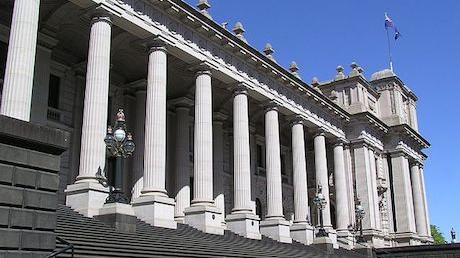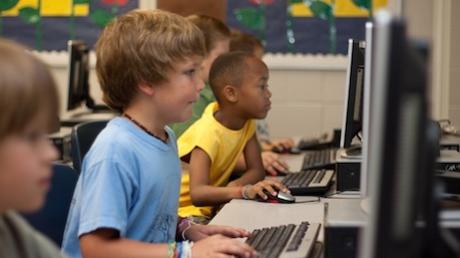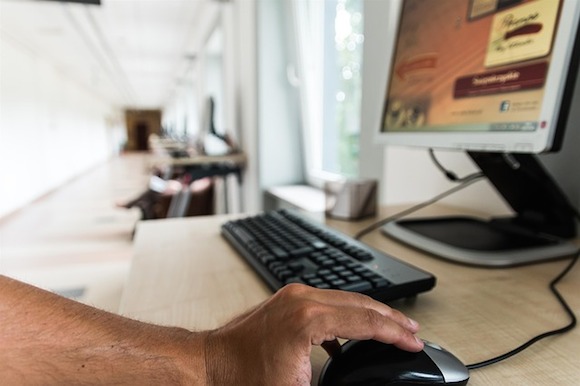Throughout the election campaign both parties have been keen to spruik their educational credentials. Just how do their policies stack up?
The immediate impression is that there doesn’t appear to be a clearly articulated vision for education on either side. Both policy documents read like a wish list but lack an underlying strategy about how to raise the quality of Victorian education.
The emphasis is strong on building infrastructure (some of which, such as new schools in growth areas, would be happening anyway) with a secondary emphasis on welfare and ancillary programs, such as the Coalition’s Year 9 First Aid initiative, and Labor’s school uniform support.
There is little that touches on the core business of teaching and learning in schools and early childhood centres, or on how we attract and develop those who are responsible for carrying out this important work – teachers and educational leaders.
Victoria has gone from having one of the most diverse and robust TAFE sectors in Australia ten years ago to a situation in which mergers and closures have become common.
Looking at the schools and preschools policies, there are some good welfare-focused initiatives from both parties. The Coalition’s policies on providing training for teachers about mental health and providing further support for students with mental health issues align well with some of the current student needs schools are grappling with, and with concerns raised by teachers.
The Coalition’s primary school welfare officers, provided they are targeted to the schools with the greatest need, could also be effective and will likely be popular with teachers and school communities.
It is also hard to argue with Labor’s proposals to implement breakfast programs, a camp, sports and excursions fund, and its program to provide eye testing and eye glasses for disadvantaged students with sight issues. All of these make good policy sense and should meet real needs in schools.
Both sides have something to say on early childhood education. Labor has a focus on capital works to improve buildings and facilities, which continues the underlying focus in their policy on capital works and infrastructure.
On the other side, the Coalition’s new Fairer Kinder policy appears problematic. Currently, Victoria has a Kindergarten Fee Subsidy policy, which provides funding support for disadvantaged students to attend four-year-old kinder (for example, those from families with a Health Care Card). The research evidence on the benefits of kinder attendance is clear, so such a policy reduces barriers for those most likely to benefit from quality early childhood education.
The Kindergarten Fee Subsidy will remain in place but, under the Coalition, would be supplemented with the Fairer Kinder policy, providing $100 per year to those parents who don’t receive the Kindergarten Fee Subsidy.
The new Fairer Kinder policy is unlikely to raise participation amongst the children who most need access, and will have no impact on quality of provision. The policy is essentially middle class welfare, as the money probably isn’t enough to sway a family decision on whether to send a child to kinder.
When it comes to TAFE, neither side has a good track record: Labor initially pulled funding out of TAFE when it was in power, and the Coalition then worsened the situation with further cuts.
Victoria has gone from having one of the most diverse and robust TAFE sectors in Australia ten years ago to a situation in which mergers and closures have become common, and access to key foundational programs has become limited. The cuts are reflected in the fact that publicly-funded TAFE enrolments have dropped by around 60,000 since 2009.
Labor’s TAFE rescue may undo some of the damage, though its focus on capital works and building upgrades won’t address issues such as quality of provision and staffing, or the domino effect higher course fees have had on individuals trying to access TAFE programs.
The key Coalition policy document doesn’t appear to mention TAFE at all. A reading of the language around TAFE (or the lack thereof) appears to suggest that both sides conceive of TAFE and schools as silos, rather than recognising the enormous and important collaborations and interactions that already exist between the two sectors.
In this vein, Labor’s proposed reopening of ten technical schools is a little bit of a mystery. It’s hard to tell from the policy documents the extent to which these will replicate or add to the existing programs of vocational education and training available to young people in schools.
It’s also not clear how the schools will differ from existing Trade Training Centres or programs where students spend a day a week at TAFE. The collapse of a number of local industries (e.g. automotive) also puts a question mark around Labor’s proposal to link these technical schools closely to existing industry skill needs. There is the potential for young people training in these schools to be left even more exposed to the vagaries of the market.
Education has undoubtedly been a key issue in this election campaign. While there are some good ideas in both policy documents, particularly on the welfare front, it’s a pity neither side has used the opportunity to grapple seriously with key ways in which quality and equity might be furthered in our education system.
Whoever wins, there will be new buildings and perhaps a few extra resources; however, the historical pattern of tinkering around the edges rather than engaging in serious evidence-based reform continues.
Suzanne Rice is a senior lecturer in the Melbourne Graduate School of Education.
Kira Clarke is a lecturer in education policy at the Melbourne Graduate School of Education at the University of Melbourne.






